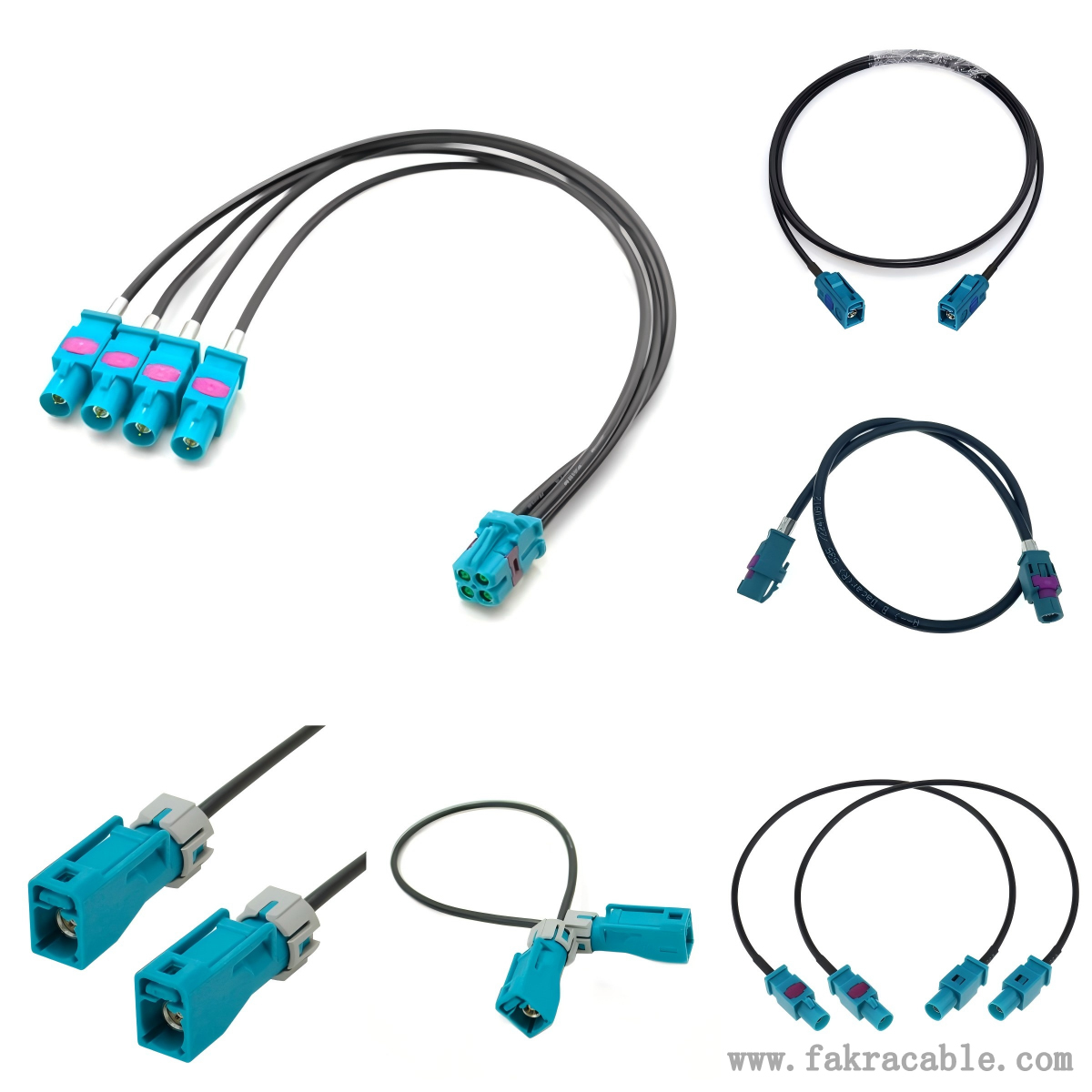Structural characteristics and performance of FAKRA male to female cable
FAKRA male to female cable is a coaxial cable used to connect devices with FAKRA male and female interface. The following is an introduction to it:
Structural characteristics
Interface type: One end is a FAKRA male connector, usually with a protruding needle connector, used to insert a female interface; The other end is a FAKRA female connector with a corresponding socket that can receive a male needle connector, achieving a tight connection.
Cable material: The internal conductor is generally made of high-quality conductive materials such as copper to ensure good signal transmission performance; The insulation layer usually uses materials such as polytetrafluoroethylene (PTFE), which have good insulation performance and high temperature resistance; The shielding layer is mostly composed of metal woven mesh and aluminum foil, which can effectively prevent electromagnetic interference and ensure signal stability.

performance parameter
Characteristic impedance: generally 50 ohms or 75 ohms, matched with the connected device to achieve optimal signal transmission, reduce signal reflection and loss.
Frequency range: It can support a wide range of frequencies and generally meet the transmission requirements of RF signals from low frequencies to several GHz. For example, in satellite navigation, Bluetooth communication and other systems in cars, it can effectively transmit signals of corresponding frequencies.
Insertion loss: In the process of signal transmission, insertion loss is relatively low, usually measured in dB. If the insertion loss is less than 1dB at a specific frequency, it ensures that the signal will not have excessive energy loss during transmission.
Voltage Standing Wave Ratio (VSWR): VSWR is generally low.
Contact: Mandy He
Phone: 15170973126
E-mail: obdwire@126.com
Whatsapp:
Add: 2nd Floor, Building 14, Aviation Science and Technology Innovation Area A, Nanchang Gaoxin Zone, Nanchang, China
We chat
